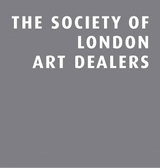Moïse Kisling (1891 - 1953)
Le port de Sanary
Request Viewing
Oil on canvas
60 x 73 cm (23 ⁵/₈ x 28 ³/₄ inches)
Signed lower right, Kisling
Executed in 1919
-
Provenance
Jonas Netter collection, Paris
Private collection, acquired from the above
Private collection, Europe
Christie's London, February 7th 2013
Private collection, France -
Exhibitions
Tokyo Metropolitan Teien Art Museum, Kisling, Grande Figure de l'Ecole de Paris, 20 April - 7 July 2019, later travalled to Okazaki City Museum, Japan, 27 July - 16 September 2019; Akita Museum of Art, Japan, 22 September - 17 November 2019; Okuda Genso Sayume Art Museum, Japan, 22 February - 25 October 2020
-
Literature
Jean Kisling, Kisling 1891-1953, vol. II, 1982, p.265, no.38 (illustrated)
-
Description
Painted in 1919, Moïse Kisling’s Le port de Sanary is a beautiful work, emblematic of the artist’s approach to landscapes. After moving to Paris in 1910, the Polish-born painter became an instrumental figure in the community of French and émigré artists known as the School of Paris. Surrounded by the likes of Chaïm Soutine and Amedeo Modigliani, Kisling and his contemporaries reinvigorated culture, experimenting with new styles of art. It was Modigliani that Kisling became particularly close with, sharing a studio space and collaborating on pieces together. Kisling has become known for his evocative paintings of everyday life, and his ability to capture bouquets, humans, and landscapes with a sense of both calmness and mystery.
Offering a sense of solace away from the chaos of metropolitan streets, Kisling continually returned to the subject of ports and harbors, often depicting the coasts of France and Italy. Located in the South of France between Toulon and Marseille, Sanary-sur-Mer, also known simply as Sanary, was captured by Kisling numerous times, with paintings such as Le port de Sanary foreshadowing his move South in the 1920’s. The Polish-born painter relocated numerous times throughout his life, but it was arguably the years spent in France which had the most significant impact on his work and identity as an artist.
Le port de sanary presents an interesting approach to perspective, perhaps most visible towards the foreground of the work where the boats and port meet obtusely. During the early 1910’s Kisling adopted a more Cubist method, with his time in Montmartre and Montparnasse, providing him with firsthand exposure to the work of Picasso and Braque. Whilst this piece was painted later, it reveals how the theories continued to inform Kisling’s practice, with flatness and geometry acting as key features within the work. This unorthodox rendering of spatial relationships speaks to Kisling’s tendency to inject his painting with overt stylisation – something which has contributed to his distinctive place within the art market.
1919 proved to be a prosperous year for Kisling, with a successful exhibition held at the Galérie Druet in November resulting in wider, global recognition, particularly with American art dealers. His ability to appeal to an international audience became a continued theme, and today Kisling remains an artist with a strong following worldwide. While particularly marketable in Asia and America he perhaps has the most stable audience in his native Poland.
Overall, Le port de Sanary is an attractive painting, which evokes a sensation of solace and sits within an important period of Kisling’s work
This original Moïse Kisling painting is available for sale.
Artist's Biography
Moïse Kisling was born Mojżesz Kisling in 1891 in Kraków which was part of the Austro-Hungarian Empire. He studied at the School of Fine Arts in Kraków, where his teachers included Jozef Pankiewicz, a fervent admirer of Auguste Renoir and the French Impressionists who encouraged him to travel to Paris, the international centre for artistic creativity in the early 20th century.
In 1910, Kisling moved to Montmartre in Paris, and a few years later to Montparnasse where he lived for the next 27 years and became part of an émigré community which included the artists Amedeo Modigliani, Georges Braque, Pablo Picasso, Jules Pascin, Max Jacob, André Salmon and Chaïm Soutine. Jules Pascin and later Amedeo Modigliani lived in the same building and Modigliani painted a portrait of him in 1916 (in the collection of the Musée d'Art Moderne de la Ville de Paris).
His style used in painting landscapes is similar to that of Marc Chagall and, a master at depicting the female body, his surreal nudes and portraits earned him the widest acclaim.
At the outbreak of World War I he volunteered for service in the French Foreign Legion, and in 1915 he was seriously wounded in the Battle of the Somme, for which he was awarded French citizenship.
Kisling volunteered for army service again in 1940 during World War II, although he was 49. When the French Army was discharged at the time of the surrender to the Germans, Kisling emigrated to the United States as he rightly feared for his safety as a Jew in occupied France. He exhibited in New York and Washington. He settled in California, where he lived until 1946.
Moise Kisling returned to France after the war and defeat of Germany and died in 1953 in Sanary-sur-Mer, Var, Provence-Alpes-Côte d'Azur, France where a residential street in the town is named after him.
You may also like
-
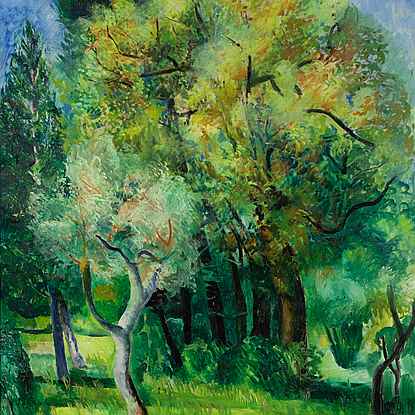 Paysage de Provence Moïse Kisling (1891 - 1953)
Paysage de Provence Moïse Kisling (1891 - 1953) -
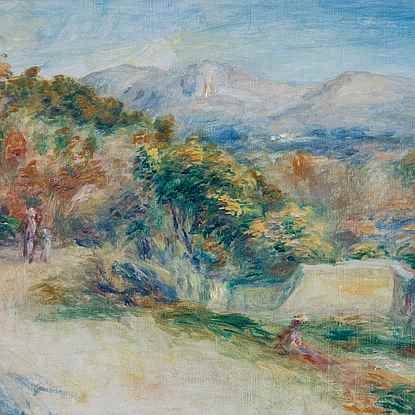 Vue prise des Collettes, Cagnes Pierre-Auguste Renoir (1841 - 1919)
Vue prise des Collettes, Cagnes Pierre-Auguste Renoir (1841 - 1919) -
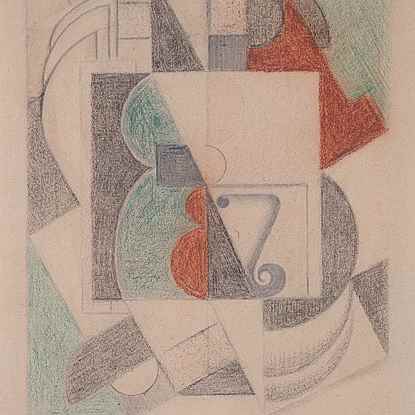 Composition cubiste Auguste Herbin (1882 - 1960)
Composition cubiste Auguste Herbin (1882 - 1960) -
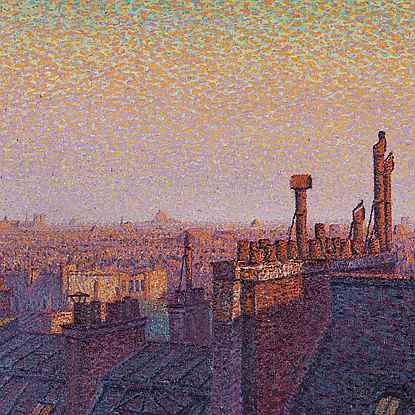 Les toits de Paris, coucher de soleil Gustave Cariot (1872 - 1950)
Les toits de Paris, coucher de soleil Gustave Cariot (1872 - 1950) -
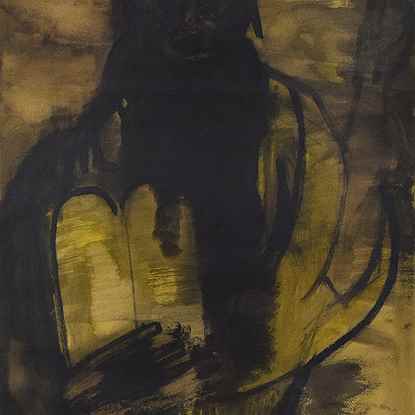 Moses on Mount Sinai Léon Bakst (1866 - 1924)
Moses on Mount Sinai Léon Bakst (1866 - 1924) -
 Jeune Fille à l'Accordéon Ismael De La Serna (1898 - 1968)
Jeune Fille à l'Accordéon Ismael De La Serna (1898 - 1968)

_1112024T161019.362.jpg?width=970&format=jpeg&qlt=40)
 FRAMED_1112024T161029.269.jpg?width=900&a.sharpen=4&format=jpeg&qlt=40)
 DETAIL 1_1112024T161042.642.jpg?width=900&a.sharpen=4&format=jpeg&qlt=40)
 DETAIL 2_1112024T161042.865.jpg?width=900&a.sharpen=4&format=jpeg&qlt=40)
 DETAIL 3_1112024T161043.74.jpg?width=900&a.sharpen=4&format=jpeg&qlt=40)
 SIGNATURE_1112024T161043.297.jpg?width=900&a.sharpen=4&format=jpeg&qlt=40)
